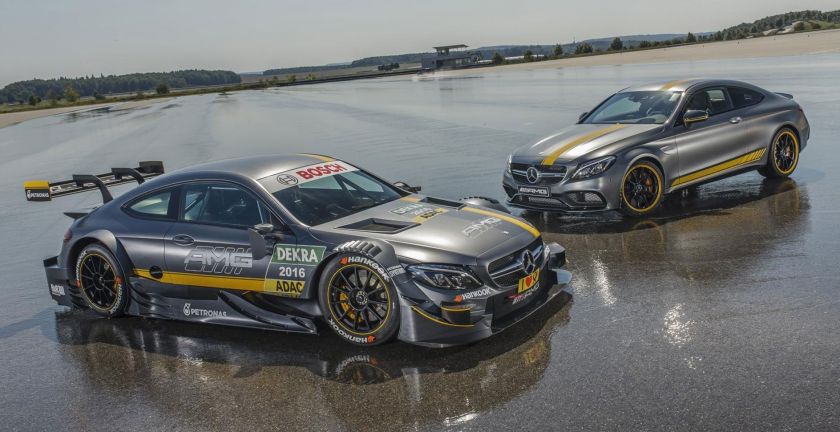
Though Germany's Big Tree are represented in a number of car racing serials, there is one single race where they meet wheel to wheel, and it is DTM. The new season’s kick-off race was won by Mercedes!
Though Germany's Big Tree are represented in a number of car racing serials, there is one single race where they meet wheel to wheel, and it is DTM. The new season’s kick-off race was won by Mercedes!
Winds of change over times
DTM is a serial race that many car racing lovers all over the world are familiar with thanks to the speed and intense competition, though some of the fans might not even know about its origins.
The kick-off to the first DTM championship was more than three decades ago, in 1984, and in those days it was called Germany's mass production car championship, or, as of 1986, Deutsche Tourenwagen Meisterschaft. The competition was between private teams, and the technical specifications of cars of different makes were subject to FIA Group A regulations. In the course of time the regulations became more lenient, and in the late '80s manufacturers' teams joined in.
The peak of the DTM first era was the mid '90s: thanks to the new regulations, the racing cars were soon pioneering the technical progress – they were equipped with extremely powerful turbo engines, carbon undercarriage, four-wheel drive, ABS etc.
This was also the time of success for Mercedes-Benz: Klaus Ludwig won the 1992 championship piloting a Mercedes-Benz 190E Evo2, and took the champion's title once again in 1994 driving a Mercedes-Benz C racing car.
In 1995, Bernd Schneider repeated this success, when he also won the new International Touring Car Series. Between 1991 and 1995, there was only one season when Mercedes-Benz did not win the manufacturer's trophy, when Nicola Larini won with an Alfa Romeo 155 V6 Ti.
Regretfully, a championship that had already become an intriguing alternative to Formula One experienced an organisational fiasco, and only once, in 1996, did it have the status of international FIA championship.
DTM returned in the car racing movement in 2000, this time called Deutsche Tourenwagen Masters, and most of the races took place in Germany again. It was Mercedes-Benz and Opel cars racing in the track. Though, late in 2005, Opel quit, Audi had already joined in 2004 while BMW joined in 2014, thus completing the present composition of competitors.
Notwithstanding the troubles with organisational matters, DTM has always shone with talented drivers: the Mercedes-Benz racing cars, apart from the legends Ludwig and Schneider, have also been driven by Formula One heroes Mika Hakkinen, David Coulthard and others.
Modern machines
To avoid an unreasonable cost increase, in 2012 the manufacturers agreed on new regulations, stipulating that the racing cars should be fast and attractive yet as similar as possible, to guarantee intense competition on the track. Therefore the so-called silhouette racing cars have been made uniform, while leaving their aerodynamics, suspension and engine control unit software at the manufacturers' own devices. The same policy is valid also for the 2016 season.
A carbon mono-block is the heart of a DTM bolide, with a safety frame mounted on it. A car has a 4-litre over 500 HP V8 engine located in the front, with a rear-wheel drive. A DTM racing car weights only 1100 together with its pilot, which, combined with the powerful engine and aerodynamics, results in really impressive speed.
Mercedes working towards success
In 2016, the DTM will be held in nine stages, also outside Germany – in Austria, the Netherlands, Russia and Hungary. Each of the stages consists of two races - on a Saturday and on Sunday.
Mercedes-Benz, represented by three racing teams, has opened the season brilliantly: a British pilot Paul di Resta with his Mercedes-AMG C63 won stage 1 in Hockenheim, while Robert Wickens, another British pilot racing for Mercedes, is the runner up in total ranking. There is a reason to hope that Mercedes-Benz, all-times most renowned manufacturer participating in the DTM, could win a constructors' trophy for the tenth time in the modern era.
A DTM racing car is a perfect partner to the Mercedes-Benz C new coupé. Mercedes-AMG C 63 S in its special AMG performance combines the elegance typical only for Mercedes-Benz with astounding dynamics and superb performance: with its 507 HP and 700 Nm torque it accelerates to 100 km/h in merely 3.9 seconds. At the same time, its CO2 emission is as low as 200/g/km.






